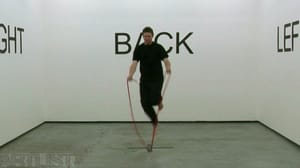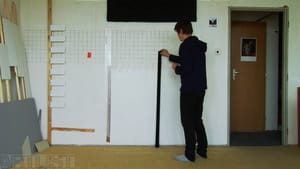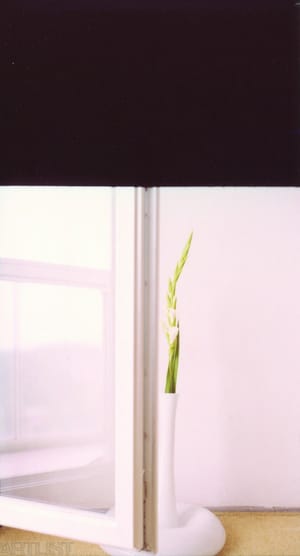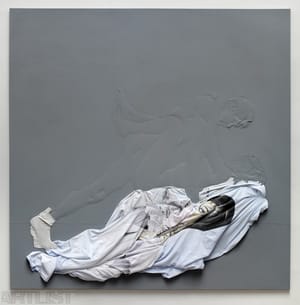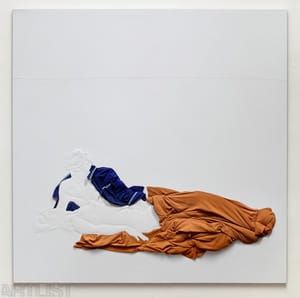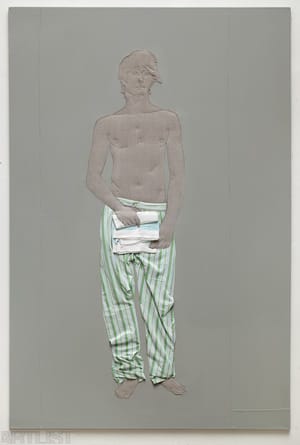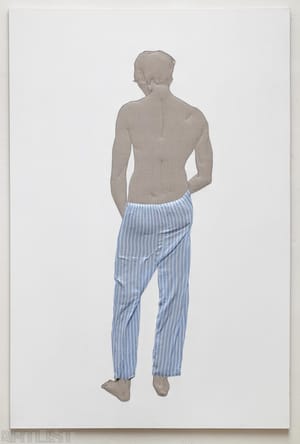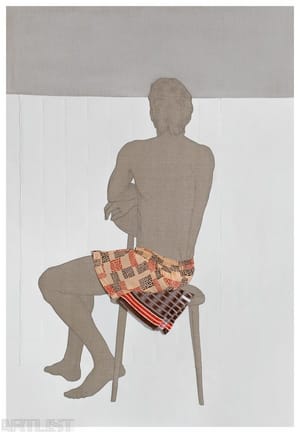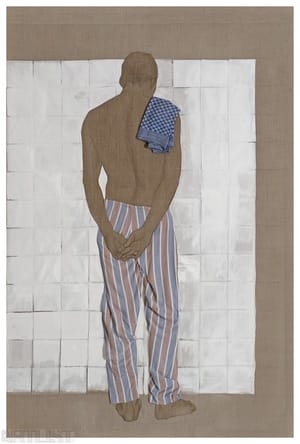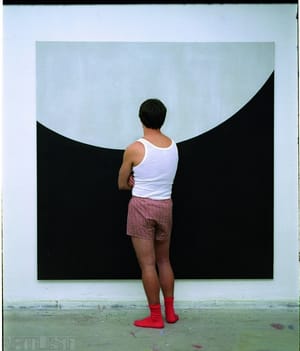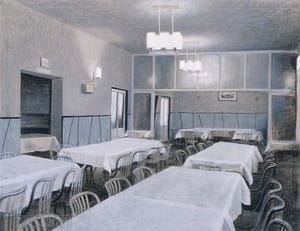- First Name
- Michal
- Surname
- Pěchouček
- Born
- 1973
- Birth place
- Teplice
- Place of work
- Praha
- Website
- www.pechoucek.com/
- i-datum
- ↳ Find in the VVP AVU database
- CSU Library
- ↳ Find in the catalogue
About artist
„I established universality and free movement via media as the basic premise of my work. I am not universally-based, not everything works out well, so sometimes I have to be happy with mere amateur experience …“
Michal Pěchouček’s work is fundamentally very traditional, even if it is taking on completely new and original forms. Pěchouček began as a graphic designer. Early on his coloured linocuts were technically brilliant and attained a painter’s quality. In 1996 however he embarked on an adventure that moved this technique into an entirely new dimension. In his graphic works he had already found inspiration in scenes from family slides taken in the 1960s and 1970s. Traditionally graphic techniques, however, did not allow him to „update“ these scenes in such a way that, when they took out the slide projector in a dark room during celebrations at home, they could be viewed on a screen. The special nearness, animation, and spatiality of the intangible image seemed to be unattainable. Pěchouček got close to this when he began to differentiate images into several layers with the help of common chain-link fence, onto which he painted synthetic colours.
The painting, Grandpa and Grandma on a Blanket – Děda s babičkou na dece (1996) came first and was followed by Train – Vlak (1996). The latter included a simple image of a grandmother sitting by the window in a train. He also tried to attain spaciousness by use of sewing (embroidering). Initially he embroidered the picture, Morning – Ráno (1996), in which his (Pěchouček’s) mother is brushing her teeth. The Monte Carlo (1996) followed together with a whole series of images on sololite, where only very small details (a piece of clothing, a raincoat, a mattress, or lamp) are sewn. In a number of his works he combines the spatial effects of both techniques. Pěchouček tries to gain more depth in a further series, where he dissects the image into several blocks (parts) of centimetre-thick glass. He draws his inspiration from photos of children from the 1940s, where he kept their original format and enlivened them only with spatial depth. At the end of the 1990s Pěchouček began to explore another graphic medium – photography. He was the first to assemble a number of photographs, again from his family albums, in the black-and-white story, New Year’s Eve – Silvestr (1998). Afterwards he created several colour photo-essays that he himself shot – Splendid Isolation (1998), Euforion (1999) or Long Christmas Eve – Dlouhý Štědrý večer (1999). In these works Pěchouček masters the usage of the narrator’s shortcut and the simple aesthetic of the (fleeting) moment. He works with the images sequentially and underscores the intimacy of the story being told with a private (modest) format. In 2001 he returned again to painting and created the story, Restaurant At the Hospital - Restaurace U Nemocnice. He further develops his photo-essay method, but this time in a painted format.
Pěchouček otherwise returns to painting on periodic basis. The synthesis of Pěchouček’s creations in recent years is without a doubt The Collector – Sběratel (2003). This is a series of 28 images that tell a story as if captured on a film reel. The series is accompanied, however, by video, in which Pěchouček in the role of artist gradually shows them to an invisible art collector. In this way he tells the paintings‘ stories. Meanwhile, as is his habit, he himself shows up in the tale. In recent years video has become his main expressive medium. He uses it to tell his own secret stories, and similar to the graphic techniques he used when he started out, he experiments with the various possibilities offered by the medium; for example, when he lets the story in the piece, Baby Carriage House – Kočárkárna (2004) unravel ceiling down.
- Author of the annotation
- Pavlína Morganová
- Published
- 2005
CV
1993-1999 AVU, Praha
1991-1993 Výtvarná škola Václava Hollara v Praze
Awards:
2003 Cena Jindřicha Chalupeckého
Exhibitions
- Solo exhibitions
-
(selection)
2011
Virgins´Lives (host Martin Kohout), Galerie Jiří Švestka, Berlín
Hodiny v umění (hosté Viktor Takáč a Pavel Švec), GHMP, Dům U Kamenného zvonu, Praha
2009
Večerka (host Ondřej Roubík), Kabinet kresby a grafiky, Galerie výtvarného umění, Cheb
2008
Screen, Galerie Jiří Švestka, Praha
2007
Filmogram, Ateliér Josefa Sudka, Praha
2006
Osobní vlak (host Ondřej Brody), Galerie Jiří Švestka, Praha
Playtime (host Matěj Smetana), Galerie Brno, Brno
2005
Emergent View (s Markétou Othovou), Kommunale Galerie im Leinwandhaus, Frankfurt am Main
2004
Kočárkárna (host Jakub Hošek), Galerie Jiří Švestka, Praha
Collector, Ikon Gallery, Birmingham
2003
Sběratel, Moravská Galerie, Atrium Pražákova paláce, Brno
- Group exhibitions not included in ARTLIST.
-
(selection)
2011
Vystavovatel, Dům umění, Brno
2010
...a nezapomeňte na květiny, Moravská galerie, Pražákův palác, Brno
50%Gray:Contemporary Czech Phography reconsidered, MoCP, Chicago
Collectors, BROT Kunsthalle, Wien
Kašpar noci, Futura, Praha
2009
Po sametu, Dům U prstenu, GHMP, Praha
Any-instant-whatever,The Bunkier Sztuki Contemporary Art Gallery, Krakow
2008
Die Gehilfen, Galerie U bílého jednorožce, Klatovy
2007
Raum. Orte der Kunst, Akademie der Künste, Berlin
Punctum, Galerie Futura, Praha
2004
Instant Europe, Villa Manin - Centro d´Arte Contemporanea, Udine
Passage d´Europe, Musée d´Art Moderne de Saint-Étienne
Welcome!, Anthony Reynolds Gallery, London
2003
Hounted Swings, College of Art, Edinburgh
Monography
- Monography
GA2LERIE (Vaňous Petr ed. ), vydal Kulturní týdeník A2, s.r.o. jako přílohu v roce 2007



